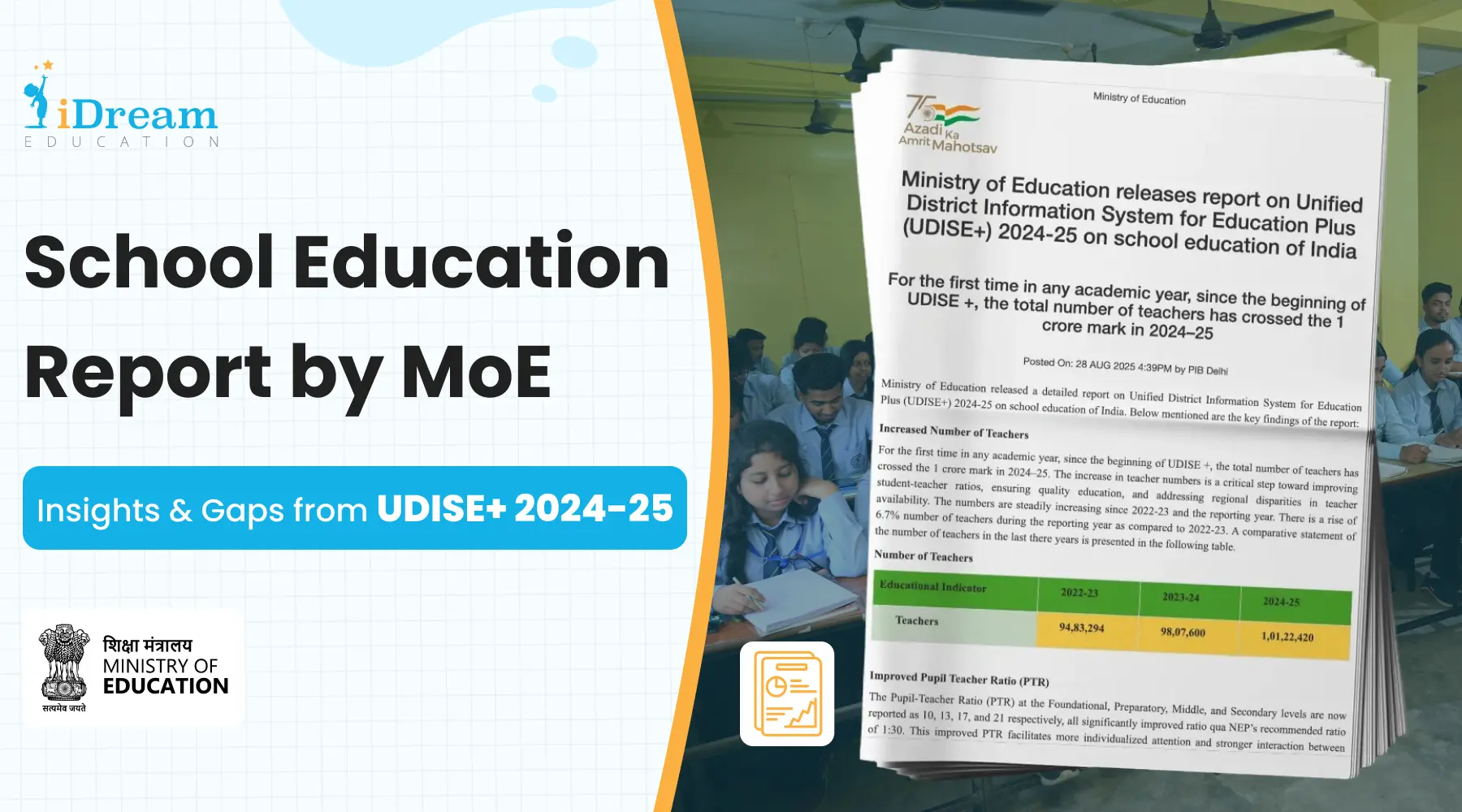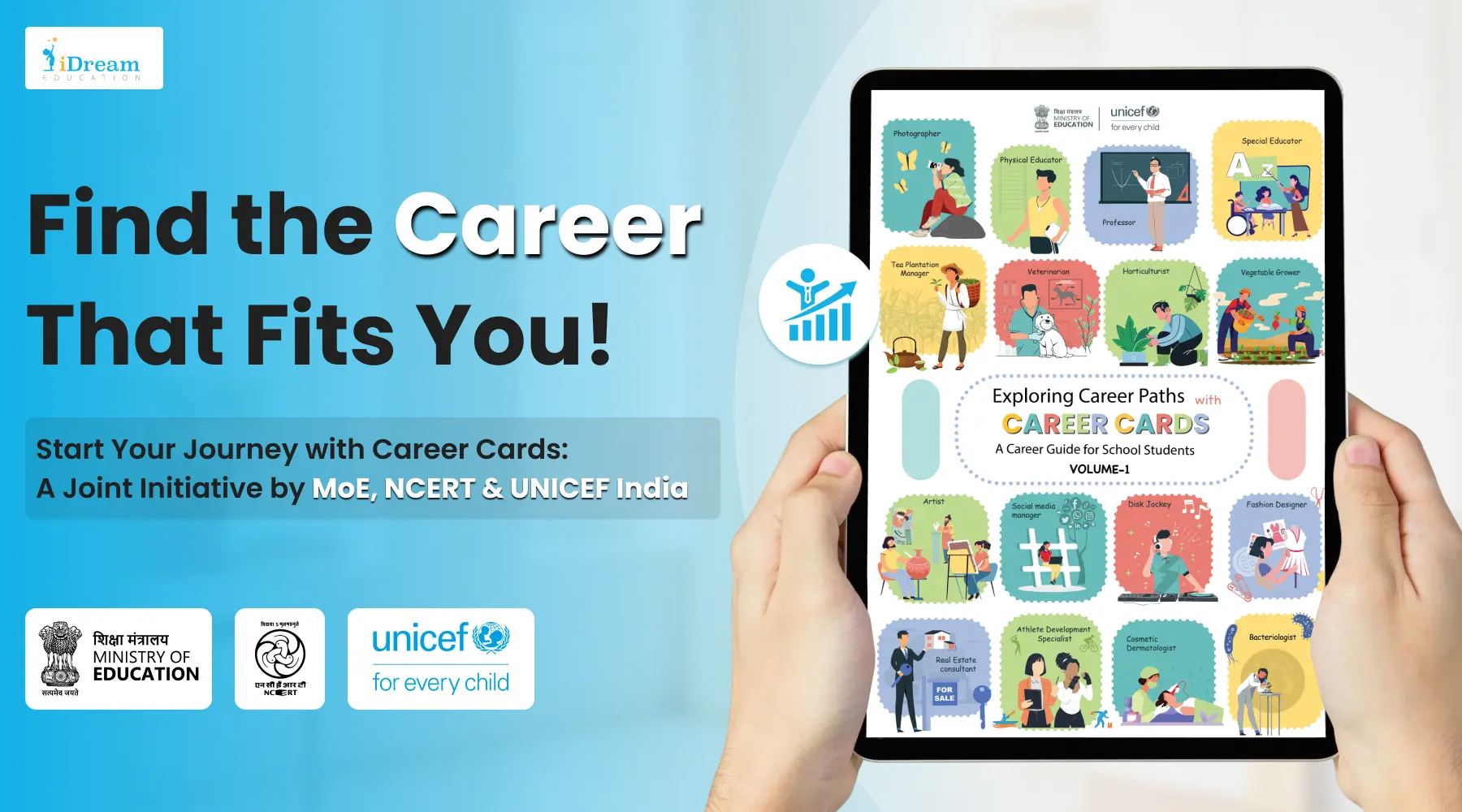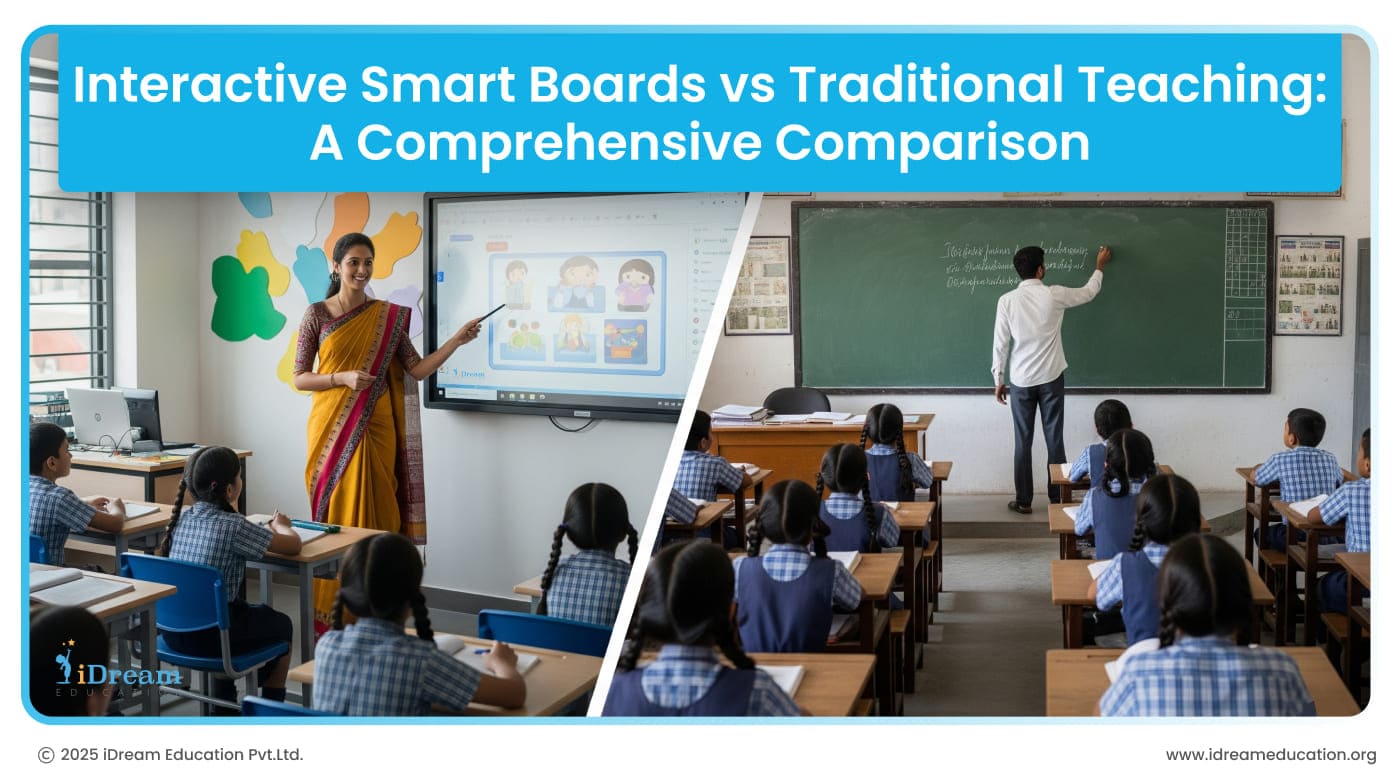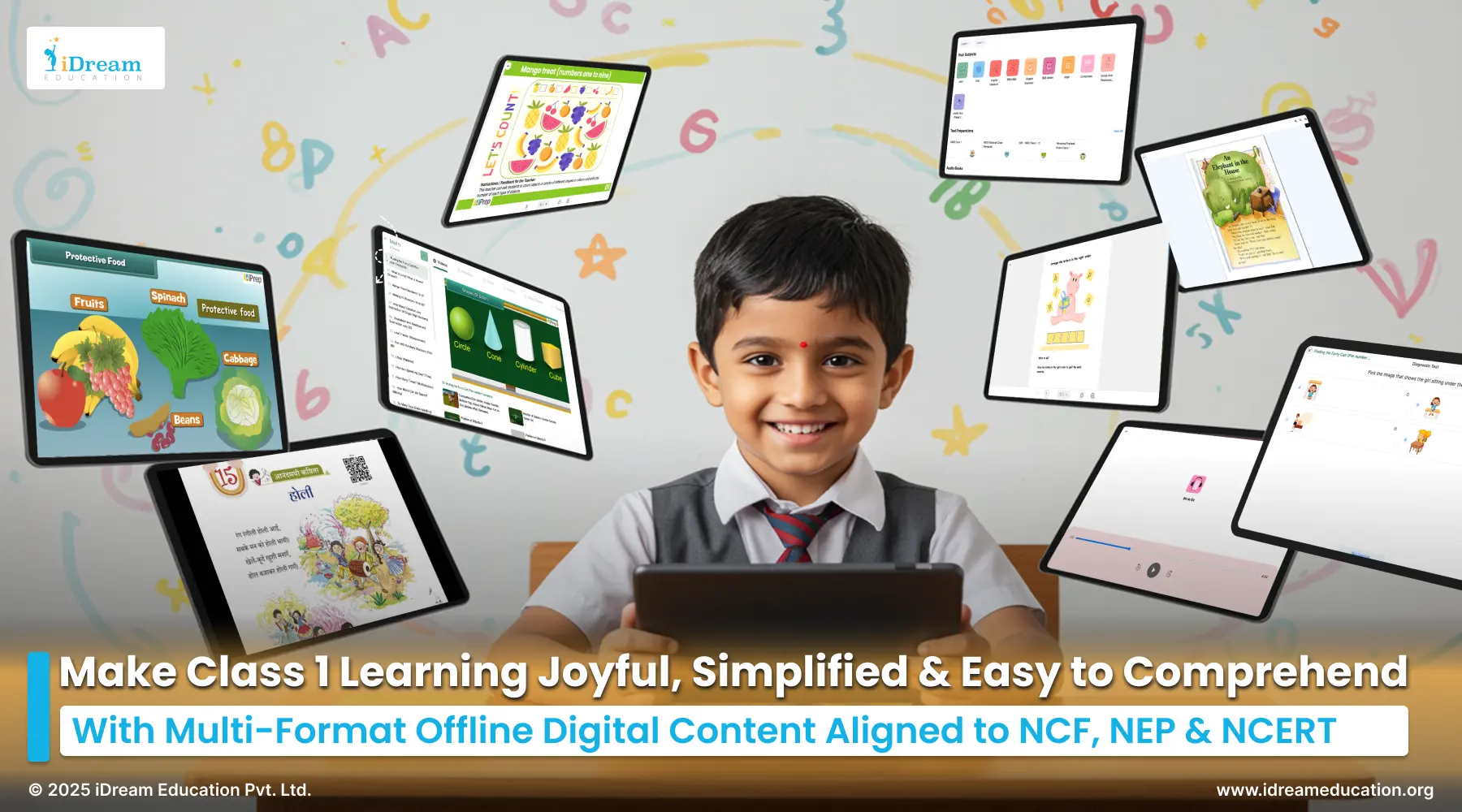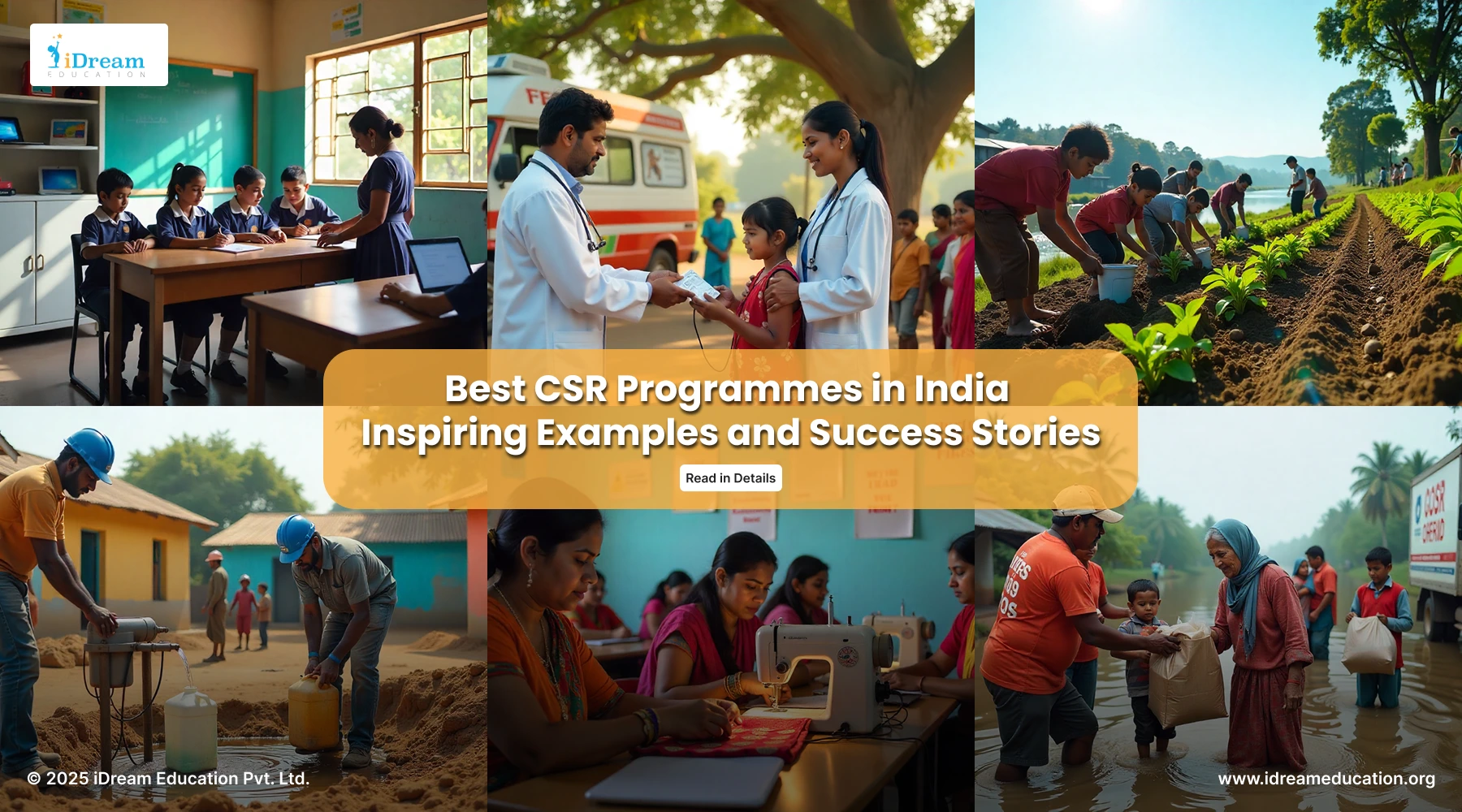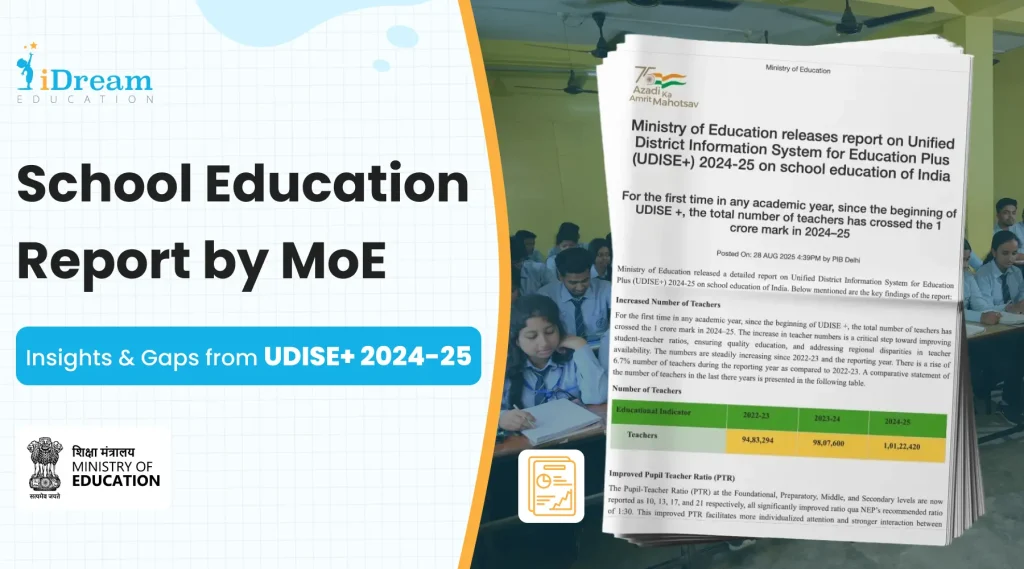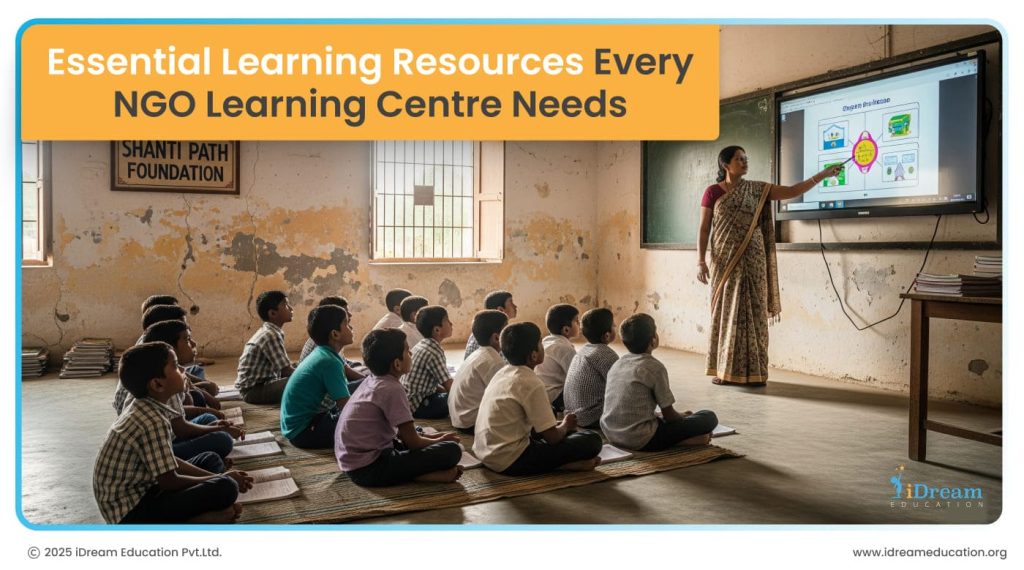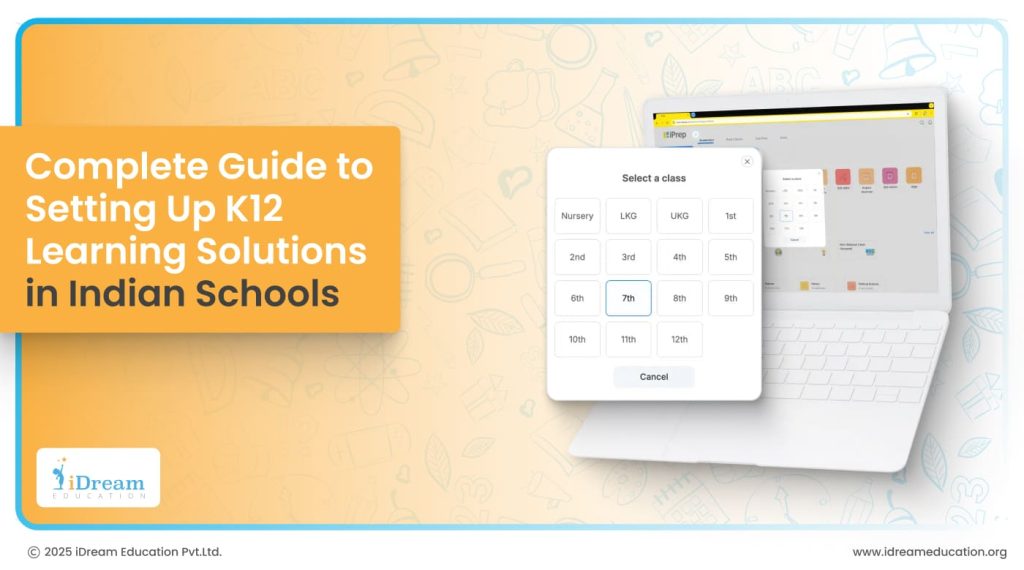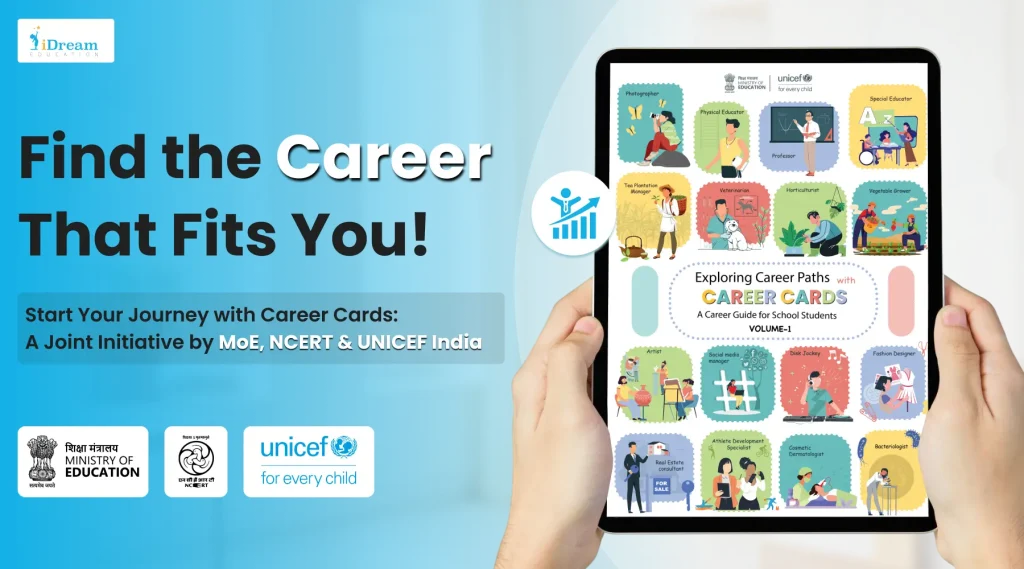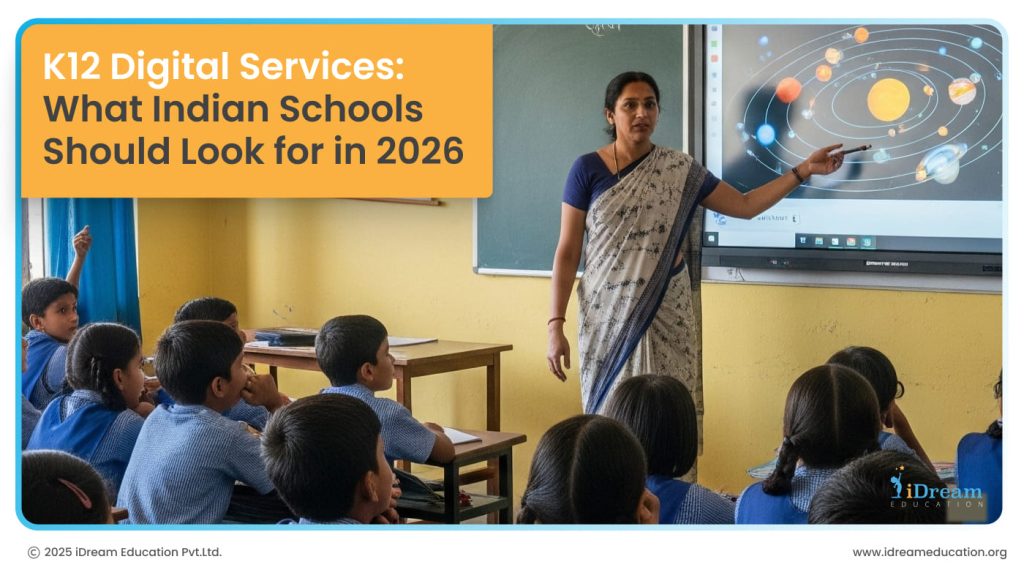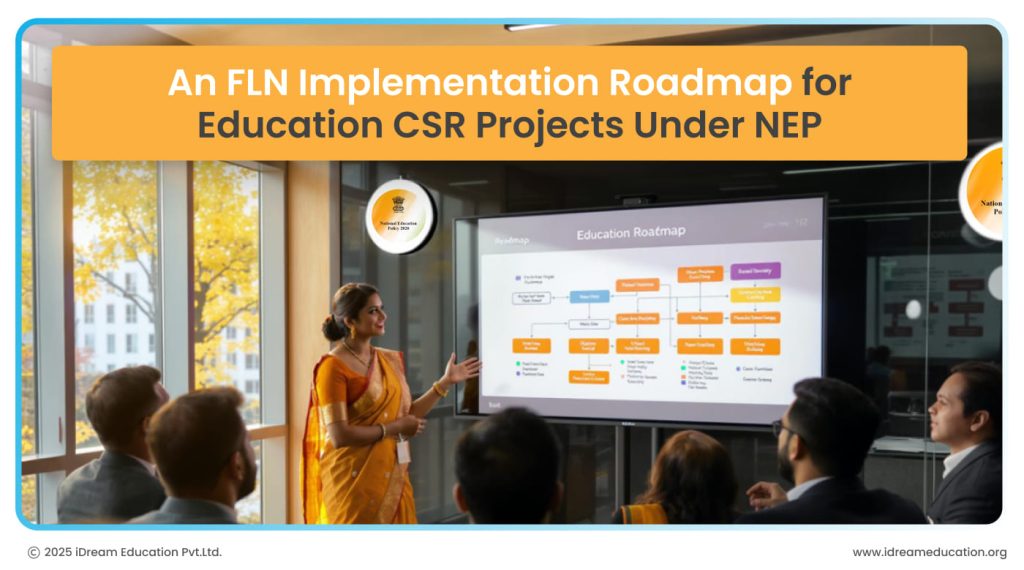
The Union Budget 2025-26 just allocated ₹78,572 crore to school education. That’s more money for education than we’ve ever seen before. But here’s what matters for education CSR leaders: how do you actually turn this into foundational literacy programmes that work?
There’s some good news in ASER 2024. For the first time in twenty years, Grade III kids in government schools are getting better at reading and math. Twenty years. Think about that. This shows us that when you do things right, children learn. The key is doing things right.
But we can’t celebrate yet. The gaps are still huge. And now that the No Detention Policy has been scrapped, kids actually have to prove they can read before moving to Grade 4. No more passing everyone along because it feels nice.
This is where foundational literacy and numeracy become critical. Not just another education buzzword, FLN is the difference between a child who can learn anything and one who struggles forever. The CSR money you invest in FLN today shapes India’s workforce for the next thirty years.
This roadmap helps education CSR teams design FLN projects that actually deliver results while fitting with NEP 2025’s goal of universal foundational literacy and numeracy.
Education CSR: Understanding the FLN Implementation Roadmap Within the NEP 2025 Framework
While there is no official document called NEP 2025, the ongoing implementation and updates to India’s National Education Policy—primarily based on NEP 2020—are clear about what foundational literacy and numeracy mean. Kids should read with understanding and do basic math by Grade 3.
Sounds simple. Unfortunately, in India’s complex educational settings, it’s not.
- The new 5+3+3+4 structure gives the foundational stage (ages 3-8) five whole years to build these skills. That’s a significant change from how we used to rush kids through concepts they didn’t understand. Five years just for foundations.
- NIPUN BHARAT is aiming for a universal FLN by 2026-27. That’s definitely ambitious. But it’s only possible if education CSR programmes get strategic about their approach.
- NEP in 2025 also acknowledges something parents have always known – children learn better in their mother tongue. When kids learn in languages they speak at home, concepts click faster. This matters for how you design programmes across India’s different regions.
The policy framework actually helps education CSR teams because it gives clear direction. When your programmes align with these principles, you get government support and community acceptance.
Building Your FLN Implementation Roadmap for Education CSR: The Four-Pillar Assessment Framework
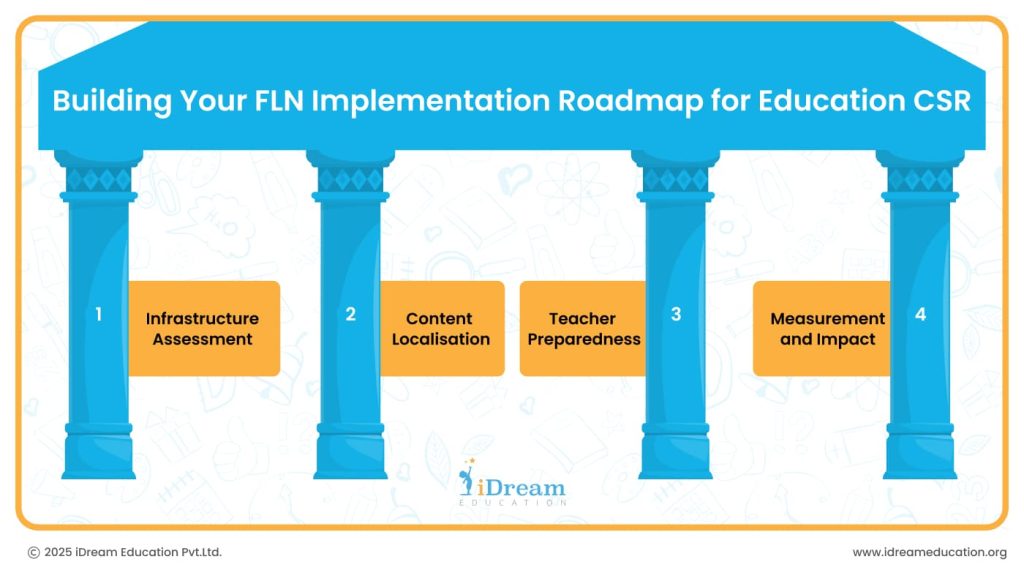
Every successful FLN programme we’ve seen addresses four things systematically:
Infrastructure Assessment
It means checking if communities are actually ready for digital learning. Connectivity varies wildly between cities and villages. Some places need completely offline solutions. Others can handle hybrid approaches. You need to know this upfront, not discover it six months in.
Hardware choices ripple through everything else. Individual tablets need different prep than smart classroom setups. Both can work, but they’re completely different operationally.
Content Localisation
This goes way beyond translation. Most programmes fail here. You can’t just take English content and add Hindi voiceover. Kids need examples from their world, language that flows naturally, and situations they recognise. One size definitely doesn’t fit all in India.
Quality localisation costs more and takes longer. But the engagement rates tell the story. Properly localised, high-quality FLN content gets used more than generic stuff.
Teacher Preparedness
It is often the make-or-break factor. NISHTHA gives basic digital skills, but many teachers still feel overwhelmed by technology. The successful teachers get ongoing support from colleagues, not just one training session.
Teachers become champions when they see immediate wins in their classroom. But this takes a gradual rollout, not dumping everything on them at once.
Measurement and Impact
Baseline tests, regular monitoring, and real-time dashboards. This isn’t bureaucracy – it’s how you prove the impact of education CSR, and catch problems before they explode.
Everyone wants different things from your data. Parents want progress reports. Schools want usage statistics. The government wants accountability metrics. Your system needs to serve all of them.
Learn More: Exploring Assessment Tools for Educational Programmes by NGOS – iDream Education Blog
Education CSR: FLN Implementation for Diverse Learning Environments
When you implement changes, everything about your strategy changes. Rural areas often have connectivity issues that require offline-first thinking. Urban areas have better infrastructure, but kids face more distractions.
- Rural programmes need digital content that works without the internet. Period. Students can’t lose access because the network went down. Community engagement becomes crucial when families aren’t familiar with digital tools.
- Urban programmes can track progress in real-time and update content regularly. But you’re competing with Instagram and YouTube for attention. Your content better be engaging.
- Scale matters for every decision. Pilot programmes with 100-500 students let you fix problems quickly. Mid-scale rollouts with 1,000-5,000 students test your operational systems. Large programmes with 10,000+ students need serious logistics.
- Budget allocation usually runs 40% hardware, 30% content, 20% training, and 10% monitoring. These ratios shift based on what’s already there and how ready the community is.
As a case in point, the Army Goodwill School in Kashmir shows how this works in tough conditions. They combined tablets and smart classrooms to address different learning needs while building something sustainable.
Education CSR: Role of Technology Integration in FLN Implementation
Smart FLN programmes use multiple devices instead of betting everything on one solution. For example:
Tablets for personal learning. Smart classes for group work. Mobile apps for home practice. Different concepts need different approaches.
Some skills need quiet individual work. Others need group discussion. Your technology setup should support both, not force everything into one format.
Offline-first design prevents connectivity disasters from killing learning. Kids shouldn’t lose access because the internet died. Quality offline NCERT content with occasional sync gives you reliability while tracking progress.
Diagnostic tests help you figure out where each kid actually stands. Instead of assuming everyone starts at the same place, good programmes meet students where they are and guide them forward.
Measuring the Success of Education CSR: Important KPIs
Let’s go over the important KPIs you need to track to understand the effects of your education CSR efforts:
- Learning outcomes are what matter most. Pre and post-tests show actual skill growth, not just how much time kids spent on activities. Grade-level achievements prove your programme works against policy goals.
- Reading improvements and math problem-solving give you concrete evidence of progress. These line up with NIPUN BHARAT targets and help you communicate clearly with stakeholders.
- Engagement metrics predict whether your programme will last. Consistent usage suggests content relevance. High teacher adoption means your training worked.
- Community involvement predicts long-term success. When families understand and support digital learning, kids do better, and programmes gain lasting support.
- Cost per student, timeline performance, and operational efficiency help you plan expansion.
Education CSR: Overcoming Common Challenges in FLN Implementation
Here are some challenges you have to tackle:
- Teacher resistance usually comes from technology anxiety, not opposition to better outcomes. Gradual adoption works better than immediate full deployment. Peer support programmes where comfortable teachers help nervous colleagues build confidence naturally.
- Student engagement needs joyful, non-judgmental environments. Many kids show up with bad academic experiences. Quality FLN programmes rebuild confidence while building skills.
- Administrative coordination requires clear communication and defined roles. Principal support is essential. Regular meetings prevent confusion and build relationships.
Takeaway
This four-pillar framework gives education CSR teams a systematic approach for designing FLN programmes. Infrastructure, digital education content, teachers, and measurement work together to create sustainable programmes aligned with NEP 2025.
The policy environment supports FLN investments more than ever. Government commitment, increased funding, and clear targets create ideal conditions for impact.
Ready to design an FLN roadmap that delivers real impact?
iDream Education can help you understand both policy details and ground realities. With our technology-embedded digital-first solutions like Smart Class, Learning Tablet, and iPrep, our K12 educational app for school students, we help private and public schools and education CSR teams to maximise their potential in delivering top-notch education.
To learn more, you may contact us at +91 7678265039.
You can also share your details here or write to us share@idreameducation.org.


